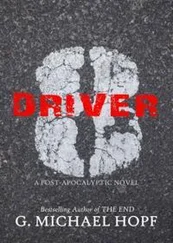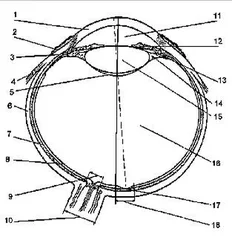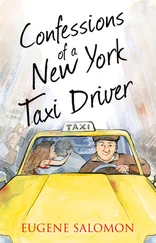State of New Jersey Motor Vehicle Commission - Driver Manual
Здесь есть возможность читать онлайн «State of New Jersey Motor Vehicle Commission - Driver Manual» весь текст электронной книги совершенно бесплатно (целиком полную версию без сокращений). В некоторых случаях можно слушать аудио, скачать через торрент в формате fb2 и присутствует краткое содержание. Жанр: sci_state, Юриспруденция, sci_transport, на английском языке. Описание произведения, (предисловие) а так же отзывы посетителей доступны на портале библиотеки ЛибКат.
- Название:Driver Manual
- Автор:
- Жанр:
- Год:неизвестен
- ISBN:нет данных
- Рейтинг книги:4 / 5. Голосов: 1
-
Избранное:Добавить в избранное
- Отзывы:
-
Ваша оценка:
- 80
- 1
- 2
- 3
- 4
- 5
Driver Manual: краткое содержание, описание и аннотация
Предлагаем к чтению аннотацию, описание, краткое содержание или предисловие (зависит от того, что написал сам автор книги «Driver Manual»). Если вы не нашли необходимую информацию о книге — напишите в комментариях, мы постараемся отыскать её.
Driver Manual — читать онлайн бесплатно полную книгу (весь текст) целиком
Ниже представлен текст книги, разбитый по страницам. Система сохранения места последней прочитанной страницы, позволяет с удобством читать онлайн бесплатно книгу «Driver Manual», без необходимости каждый раз заново искать на чём Вы остановились. Поставьте закладку, и сможете в любой момент перейти на страницу, на которой закончили чтение.
Интервал:
Закладка:
Work licenses
New Jersey does not allow conditional or special work licenses. If a motorist loses his/her license for any reason, driving is not permitted for any reason until the period of suspension ends and the motorist receives a notice of restoration.
Chapter 8. Sharing the road with others
People
It is important for a motorist to remember that he/she is not the only one using the roadways. From people to animals to other types of vehicles, it is a motorist’s responsibility to know how to safely share the road with others.
Pedestrians
Pedestrians are the second largest category of motor vehicle deaths and injuries in New Jersey. Children and older people are often victims of traffic accidents.
In 2006, the U.S. Department of Transportation Fatality Analysis Reporting System reported 4,784 total pedestrian deaths. New Jersey had 171 pedestrian deaths in 2006. Unfortunately, many of the measures that make roads safer for motorists, such as large medians and wide shoulders, make those roads more treacherous for pedestrians. Vehicle-pedestrian collisions have a five percent fatality rate if the car is going 20 mph, but the rate jumps to 85 percent at 40 mph.
Pedestrian activity is at its greatest in densely developed areas, such as cities and town centers, but it also is significant in neighborhoods and along and across suburban roadways. Motorists should take special precautions to watch for pedestrians.
In most cases, pedestrians have the right-of-way at all intersections. There is a crosswalk at every intersection, even if it is not painted as such. This is known as an “unmarked crosswalk.”
Motorists are prohibited from blocking the crosswalk when stopped at a red light or stop sign. A motorist must not stop with a portion of his/her vehicle in the crosswalk area. When a motorist blocks a crosswalk, it forces pedestrians to go around a vehicle, putting them in danger.
A motorist must stop and remain stopped for a pedestrian who is crossing at a crosswalk (marked or unmarked) until the pedestrian completes his/her crossing, unless traveling along the half of the roadway on the other side of a safety island from the pedestrian. Motorists who fail to yield to pedestrians or who overtake and pass vehicles that are stopped for pedestrians are subject to a $100 fine and up to 15 days in jail (N.J.S.A. 39:4-36).
Never pass a vehicle stopped at a crosswalk (N.J.S.A. 39:4-36). This frequently causes severe injury or death to pedestrians, especially if the passing vehicle is traveling at a high speed. When stopping for a crosswalk on a multi-lane road, a motorist should stop about 30 feet before a crosswalk to avoid blocking visibility of a motorist in the second lane.
Motorists should watch for signs that mark special hazard areas, such as school zones, bus stops, playgrounds, parks and schools, where children are most likely to play or cross the streets. Children chasing a ball, for instance, give no thought to traffic. Small children are hard to see. Always watch for movement around parked vehicles.
Motorists should drive cautiously along roadways with on-street parking, as pedestrians may appear from between parked vehicles. Motorists traveling at lower speeds will have a greater ability to stop the vehicle and avoid potential conflicts with pedestrians.
Pedestrians and joggers should walk or jog off the roadway when sidewalks are available and face traffic. They should cross at crosswalks only on the proper signal, look all ways before crossing, avoid crossing between parked vehicles, and at night, wear light-colored or reflective clothes and carry a white handkerchief or a light. It is not a good practice to wear headphones while walking or jogging near the roadway.
At night, motorists should watch for anyone walking along a highway and exercise due caution. None of the above absolves motorists from their duty to be extra vigilant in watching for pedestrians on the roadway.
Always yield to pedestrians. Be extra careful at intersections, particularly when making an allowed right turn on red. Motorists are required to yield to pedestrians who have the right-of-way within a crosswalk and to those who are crossing at an intersection. Be alert for pedestrians when making turns and entering and exiting driveways, parking lots and alleys.
Mature drivers
One out of four New Jersey residents is 55 years or older. This ratio is expected to increase in the coming years. Mobility by driving is essential for this group.
Normal physical changes are part of the aging process. Mature drivers may experience declines in vision, hearing, reaction time and flexibility.
They can continue to drive safely by learning to compensate for these changes by following these important tips:
* Choose the time and the road that is best suited to driving ability.
* Choose a well-lit roadway for night driving.
* Stay alert when driving to compensate for any declines in vision, hearing or reaction time.
* Keep information on public transportation, taxi services and senior ride programs current and on hand in case an alternative transportation mode is needed.
* Share driving time with another person.
* Keep driver license current.
* Enroll in a defensive-driving or driving refresher course.
* Visit an ophthalmologist, optometrist or optician annually for a vision and eyeglasses check. Have eyes checked immediately if vision problems are experienced.
* Ask a doctor or pharmacist if the medications taken can affect driving.
* Never drive if taking any medications and consuming alcohol.
* Do not drink alcoholic beverages in any quantity and drive.
* Accept the judgment of family and friends about driving skills. Ask them to
rate skills, and improve or discontinue driving if there is a concern for safety.
Note: Retesting for drivers may be required after a serious collision or medical problem.
Visually challenged persons
The law is very specific that vehicles must give their right-of-way when any of the following crosses any highway or intersection: blind persons who use a predominantly white or metallic cane, blind persons accompanied by a guide dog, or a guide dog instructor engaged in instructing a guide dog. A motorist must stop when he/she sees a person with a white or metallic “colored” cane or with a guide dog. All motorists must comply with this law (N.J.S.A. 39:4-37.1).
Motorcycles
Be alert! The same laws governing other motor vehicles also govern motorcycles. However, due to the smaller size of motorcycles, extra caution should be used when sharing the road.
Never follow motorcycles too closely. A motorist should be aware of slippery, sloped or uneven surfaces and grooves and gratings in the roadway, which present potential hazards for motorcycle riders. Objects on the roadway also present a challenge. Motorcyclists must be ready to react to these situations differently than motorists driving passenger vehicles. This is why it is important to leave plenty of space between an automobile and a motorcycle.
When passed by a motorcycle, a motorist should maintain his/her speed and position. Allow plenty of room for the motorcycle to complete the pass and resume proper lane position.
A motorist’s failure to detect and recognize motorcycles in traffic is the most common cause of motorcycle collisions.
For more information on motorcycle safety, visit www.njridesafe.org. Copies of the New Jersey Motorcycle Manual may be downloaded, picked up at any motor vehicle agency or ordered by calling (888) 486-3339.
Trucks, tractor-trailers and buses
Интервал:
Закладка:
Похожие книги на «Driver Manual»
Представляем Вашему вниманию похожие книги на «Driver Manual» списком для выбора. Мы отобрали схожую по названию и смыслу литературу в надежде предоставить читателям больше вариантов отыскать новые, интересные, ещё непрочитанные произведения.
Обсуждение, отзывы о книге «Driver Manual» и просто собственные мнения читателей. Оставьте ваши комментарии, напишите, что Вы думаете о произведении, его смысле или главных героях. Укажите что конкретно понравилось, а что нет, и почему Вы так считаете.









![Nicholas Timmins - The Five Giants [New Edition] - A Biography of the Welfare State](/books/701739/nicholas-timmins-the-five-giants-new-edition-a-thumb.webp)

